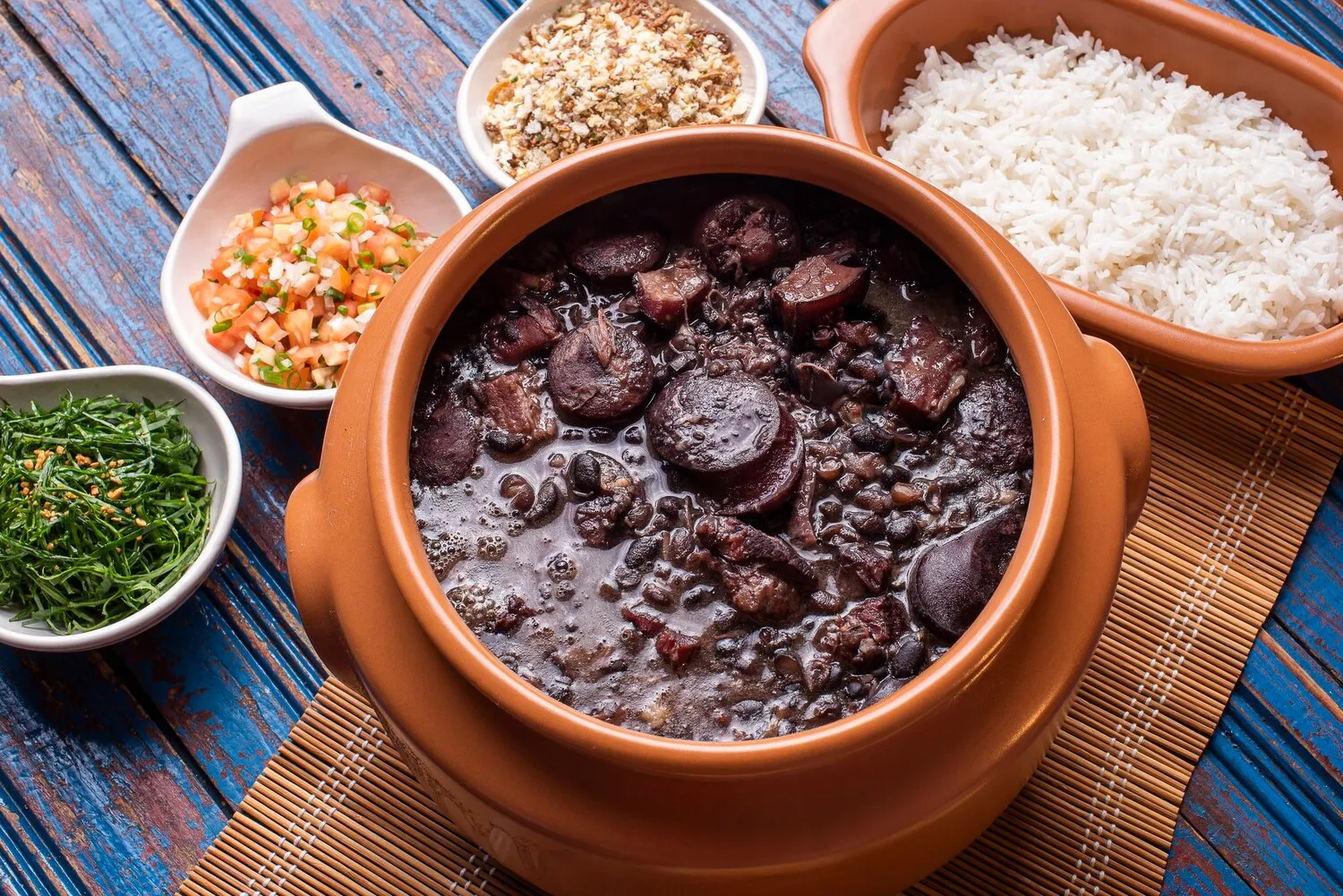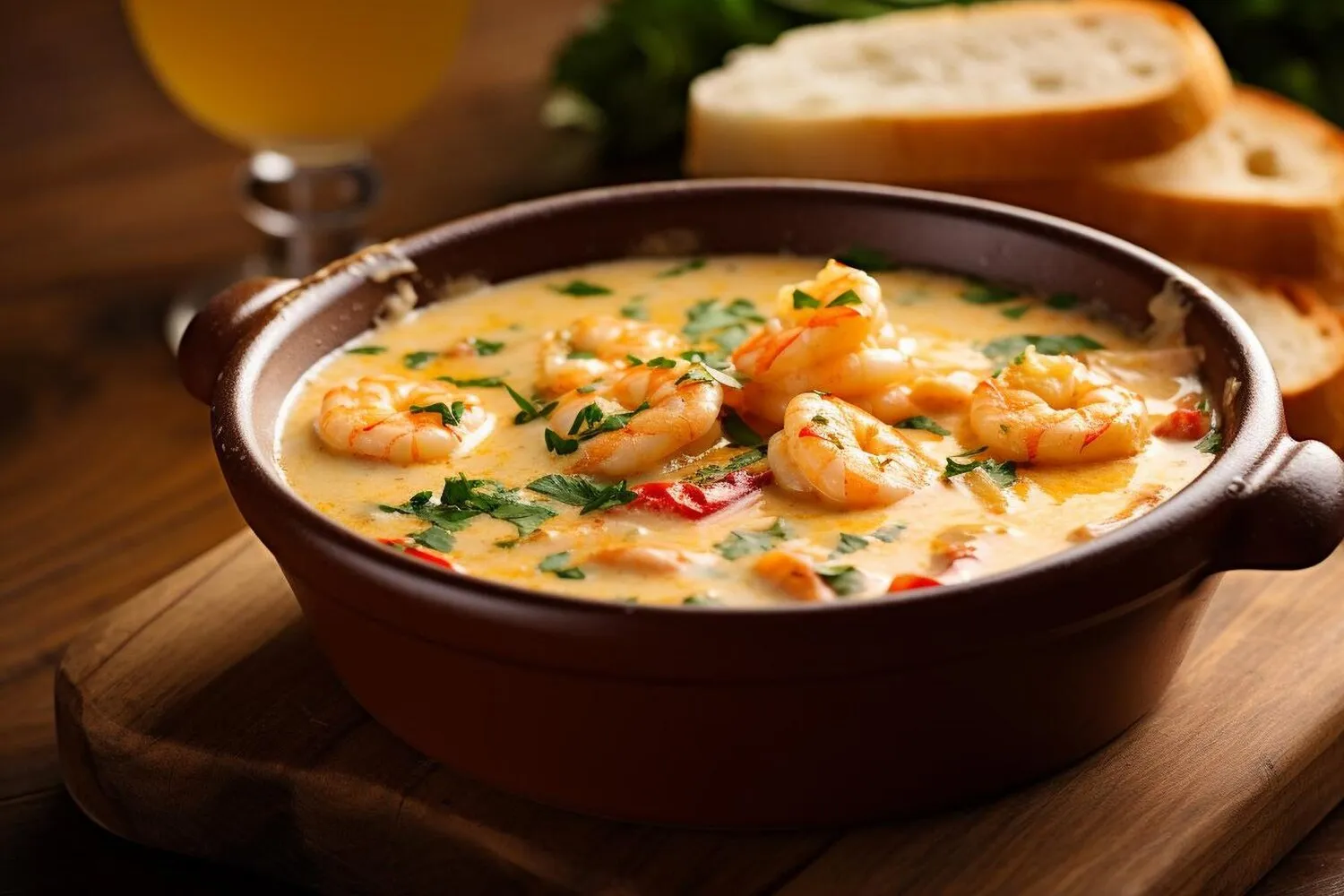
Moqueca Baiana
A traditional Bahian seafood stew, typically made with fish, shrimp, coconut milk, tomatoes, peppers, and coriander, simmered in a clay pot.
Nutrition Facts
* The % Daily Value (DV) tells you how much a nutrient in a serving of food contributes to a daily diet. 2,000 calories a day is used for general nutrition advice.
Mistura Fina Restaurante
Moqueca Baiana's history is intertwined with the cultural blending of Indigenous, African, and Portuguese influences in the Bahia region of Brazil. Indigenous cooking techniques, combined with African ingredients like coconut milk and palm oil (dendê), and Portuguese seafood traditions, resulted in this iconic stew.
Moqueca Baiana is more than just a dish; it's a symbol of Bahian culture and identity, often served during festive gatherings and celebrations. It represents the region's history, its diverse culinary influences, and its vibrant spirit.
Celebratory Dish
Moqueca Baiana is frequently served at special occasions, family gatherings, and religious festivals in Bahia, highlighting its importance in Bahian social life.
Regional Identity
The dish is a source of pride for Bahians and is often seen as a representation of their unique culinary heritage and cultural identity within Brazil.
Sharing and Community
Traditionally, moqueca is prepared in a large clay pot (panela de barro) and served communally, reinforcing the values of sharing and community that are central to Bahian culture.
Moqueca Baiana is a rich and savory stew defined by the delicate sweetness of coconut milk, the bright acidity of tomatoes, and the aromatic warmth of peppers and coriander. The seafood provides a delicate, fresh counterpoint to the other rich flavors.
The primary flavor profile is a complex interplay of sweet, savory, and subtly spicy. The coconut milk lends a creamy sweetness that is balanced by the acidity of tomatoes and the fragrant aroma of peppers (often bell peppers and malagueta peppers for a touch of heat). Coriander provides a fresh, herbaceous note, while the seafood contributes its inherent briny taste. A crucial ingredient is dendê oil (palm oil), which adds a distinctive reddish-orange hue and a slightly earthy, musky flavor that is characteristic of Bahian cuisine. The quality of the seafood directly affects the overall flavor, with fresh fish and shrimp contributing to a cleaner, more pronounced seafood taste.
Use Fresh Ingredients
The quality of the seafood and vegetables is crucial for the flavor of the moqueca. Choose the freshest fish, shrimp, tomatoes, and peppers available.
Don't Overcook the Seafood
Overcooked seafood becomes tough and rubbery. Add the seafood towards the end of the cooking process and cook just until it is opaque and tender.
Embrace Dendê Oil
Dendê oil is a key ingredient that contributes to the distinctive flavor and color of Moqueca Baiana. While it may be substituted, the authentic flavor is best achieved with real dendê oil. Be careful when using it, as a little goes a long way.
Simmer Gently
The moqueca should be simmered gently to allow the flavors to meld together without overcooking the ingredients. Avoid boiling it vigorously.
Use a Clay Pot (if possible)
While not essential, cooking the moqueca in a traditional clay pot (panela de barro) can enhance the flavor and authenticity of the dish. The clay helps to distribute heat evenly and impart a subtle earthy flavor.
Explore additional Traditional Stew dishes and restaurants
Explore Traditional StewDiscover top dining spots and culinary experiences in Salvador.
Explore SalvadorLearn more about the food culture, restaurant scene, and culinary heritage of Brazil.
Explore Brazil
